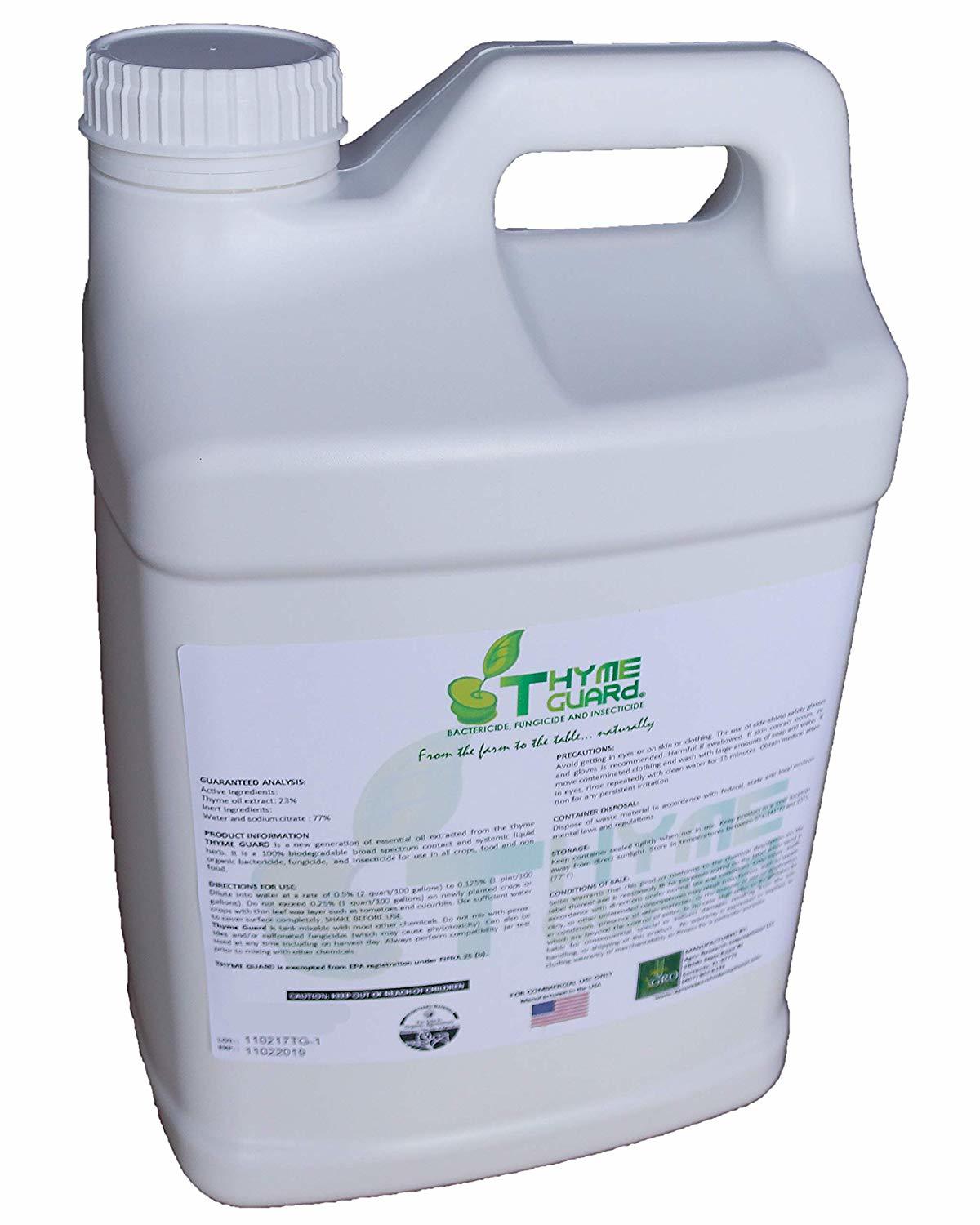Organic, Systemic, Bactericide Found To Control Citrus Greening Bacteria (HLB)!
IFAS scientists have tested a thyme oil extract product and found it to kill the HLB that causes greening disease, when used at proper dilution ratios and applied as a soil drench.
Thyme Guard is a strong bactericide for systemic use, as well as a fungicide and insecticide. It was found to provide 90% control for greening at 10ppm concentration in the leaf sap, and 100% control at 100ppm. Application rates of 0.5% were used in both foliar spraying and soil drenching trials. Soil application appears to provide faster and perhaps more efficient delivery of the product than the foliar spraying. It also has a residual effect within the plant of up to 20 days.
While there are other thyme oil products on the market, Thyme Guard is the one tested in this particular study. It is 23% thyme oil extract, and 77% water and sodium citrate. It is EPA 25b exempt, but can be phytotoxic at high concentrations of >2%. While it can be used in conjunction with other chemicals, it is not recommended to tank mix with other fungicides or pesticides. Always follow the precautions on the label.

Testing Explained
Thyme oil primarily contains two natural phenols (thymol and carvacrol) that control bacteria and fungi pathogens, as well as two natural terpenes for controlling insecticidal activity.
Thyme Guard applied to the soil, rapidly translocates throughout the tree and can be found in the leaves approximately 4 hours later.
In the study performed in 2015, IFAS scientists tested the leaf sap for the presence of the phenols and found that Thyme Guard provided 90% control of HLB at 10ppm, and 100% control at 100ppm. In a series of tests performed in 2017, they measured phenols in the trees after application of the Thyme Guard both foliarly and via soil drench, at an application rate of 0.5%. The goal was to reach a threshold of at least 10ppm, to achieve control without inducing phytotoxic effects.
Most of the tests were performed on young, 2 yr old trees, but ongoing tests will include older, larger trees. Soil applications proved more beneficial to the uptake of phenols than the foliar spraying. Initial testing shows that environmental conditions also make a significant impact on the uptake of the thyme oil: winter application on shade grown trees don't uptake as much as warm weather applications on trees in sunny locations. Another observation under study is that sicker trees do not uptake the phenols as efficiently as healthier trees.
INITIAL RECOMMENDATIONS
Researchers are recommending growers do at least 1 application of Thyme Guard in the soil during the year at a rate of 2 to 4 quarts if in the micro jet irrigation. For homeowners using equipment such as hose end sprayers and back packs, use the ratios on the container: a range of 0.125% (1 pint/100 gallons) to 0.5% (2qts/100 gallons). The studies discussed here used the 0.5% ratio.
IF USING A PRE-SET HOSE END SPRAYER
A typical pre-set hose end sprayer uses a 2-step dilution process. You put a small amount of concentrate in the quart container, fill with water, and the sprayer will further dilute as you turn on the hose and spray your garden. This ensures a well-mixed end product.
Our pre-set green-top sprayer dilutes at a ratio of 3oz mix to the gallon, for approx 10-10.5 gallons of product, depending on how you filled the container and how the straw is positioned inside. So for the sake of simplicity, let's call it a 10g sprayer -- mine is never completely full because of foam in the way. Using the ratio of 2qt/100gallons, the math works out to 0.64oz concentrate/gal. So if you use approximately 6.5oz Thyme Guard in the green-top sprayer, fill with water, then your ratio should be close to that used in the tests mentioned here.
DON'T OVERUSE
Thyme Guard kills both beneficial microbes and pathogens in the soil, so researchers are presently recommending a follow-up protocol of adding beneficials back to the soil, 10-14 days later. Their product, Agro-Gold, contains beneficials similar to those contained in the Nutri-Hold available on our website. NutriHold is a combination of humic acid, fulvic acid and beneficial bacteria & beneficial fungi.
TESTING FOR PHENOL CONCENTRATIONS
The trials performed at IFAS used a Hach PL-1 phenol test kit. While it is similar technology to a pH testing kit, it is probably a bit complicated and costly for most of us, but is available through a web search. Hopefully we'll get more precise guidelines soon for applying the Thyme Guard for predictable results without needing expensive testing.
STRIVING FOR TOTAL PROTECTION
Thyme Guard addresses the pathogen only, and is not a stand-alone treatment for greening. A complete program for greening protection includes bug control (an insecticide), killing the pathogen (a bactericide), and restoring and maintaining the health of the trees (ongoing nutritional support). Insecticidal control should include both foliar and soil drench applications.
As the researchers continue with their testing, we anticipate updates to these protocols.
References:
http://www.agroresearchinternational.com/2018/01/04/thyme-guard-soil-application-to-control-citrus-hlb/
http://www.agroresearchinternational.com/2018/01/18/thyme-guard-vs-asian-citrus-psyllid/
